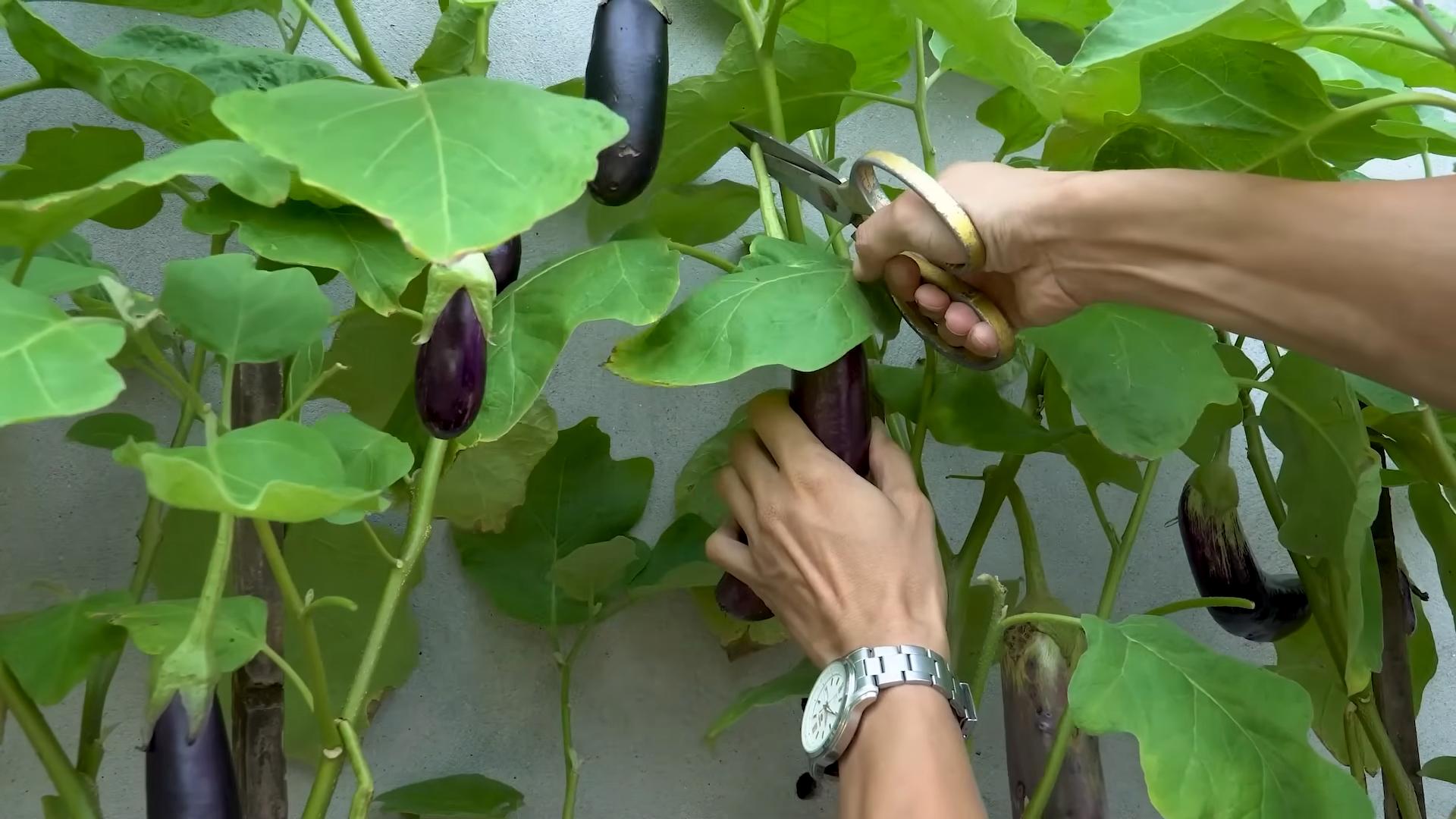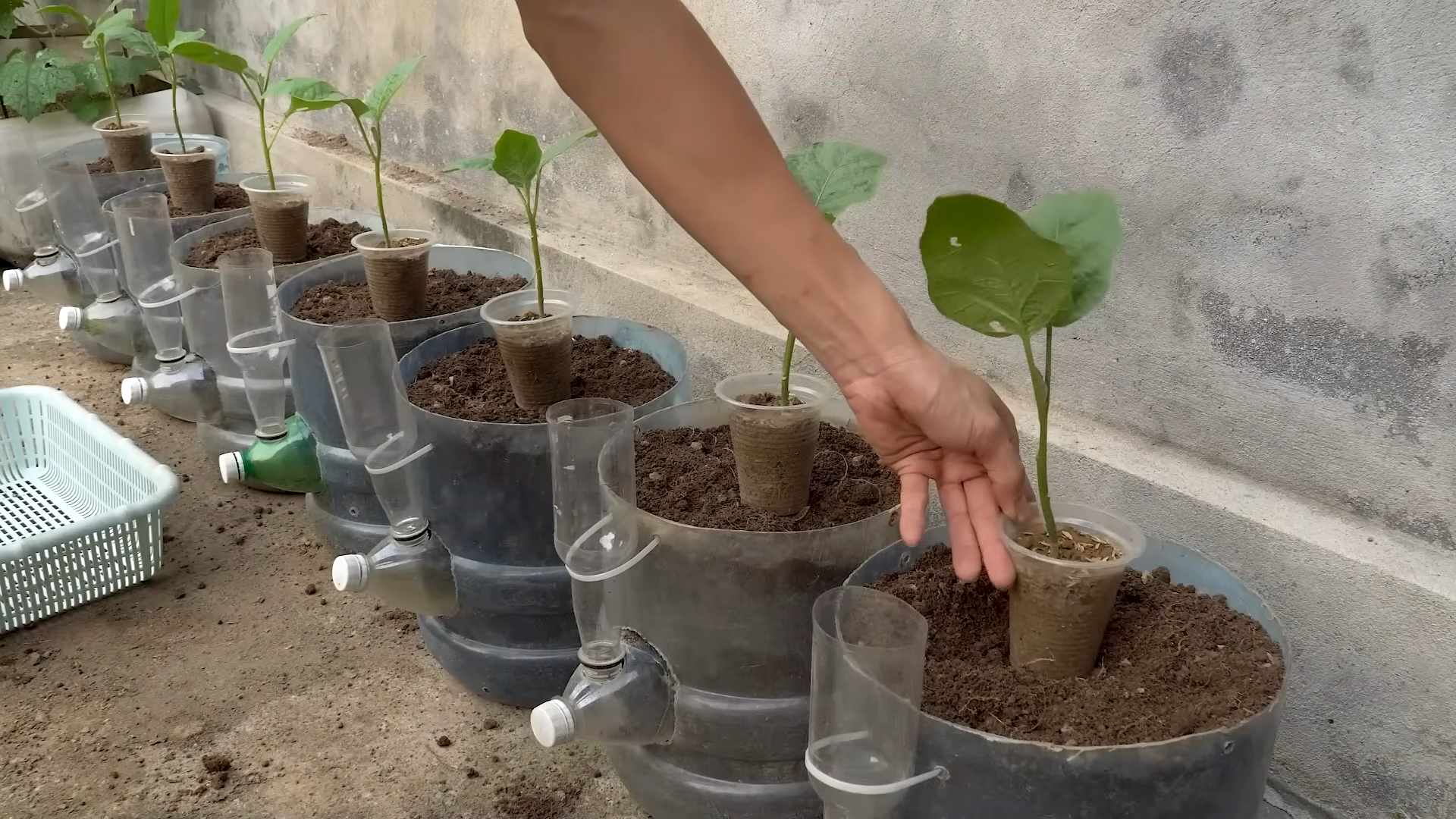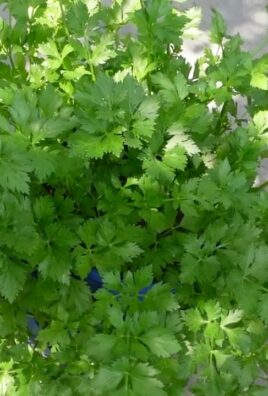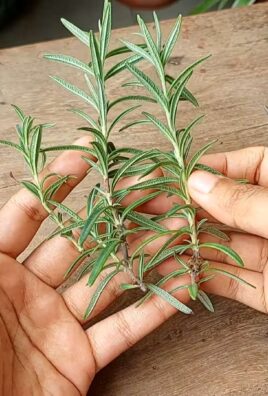Growing Eggplant Without a Garden? Absolutely! I know what you’re thinking: “Eggplants? Those fussy, sun-loving vegetables? In *my* tiny apartment?” But trust me, you absolutely can cultivate these beauties, even without a sprawling backyard. This DIY guide is your secret weapon to unlocking delicious, homegrown eggplants, no matter your living situation.
Eggplants, with their rich history tracing back to ancient Asia, have been a culinary staple for centuries. From the Mediterranean’s moussaka to Asia’s flavorful curries, this versatile vegetable has graced tables worldwide. But you don’t need to travel the globe or own a farm to enjoy their unique flavor.
In today’s world, where access to fresh, healthy produce can be a challenge, learning how to grow your own food, even in a small space, is more important than ever. This article will provide you with simple, effective tricks and hacks to successfully growing eggplant without a garden. Imagine the satisfaction of harvesting your own plump, glossy eggplants, knowing exactly where they came from and how they were grown. Plus, growing eggplant without a garden is a fantastic way to reduce your carbon footprint and connect with nature, even in the heart of the city. So, let’s dive in and transform your balcony, patio, or even a sunny windowsill into a thriving eggplant oasis!

Growing Eggplant Without a Garden: A DIY Container Gardening Guide
Hey there, fellow gardening enthusiasts! So, you’re dreaming of delicious, homegrown eggplant but lack the sprawling garden space? No problem! I’m here to tell you that you absolutely CAN grow eggplant successfully in containers. I’ve done it myself, and I’m excited to share my secrets with you. It’s easier than you think, and the satisfaction of harvesting your own eggplant is truly rewarding. Let’s dive in!
Choosing the Right Eggplant Variety
First things first, not all eggplant varieties are created equal when it comes to container gardening. You’ll want to opt for compact or dwarf varieties that are naturally smaller and better suited for confined spaces. Here are a few of my personal favorites:
* Fairy Tale: These produce beautiful, small, striped eggplants that are perfect for grilling or roasting. They’re also incredibly productive.
* Patio Baby: As the name suggests, this variety is specifically bred for container gardening. It yields lots of small, glossy, dark purple eggplants.
* Hansel and Gretel: These are adorable, miniature eggplants that come in both purple (Hansel) and white (Gretel) varieties. They’re not only delicious but also add a touch of whimsy to your patio.
* Little Fingers: This variety produces long, slender, finger-like eggplants that are tender and flavorful.
Selecting the Perfect Container
The size of your container is crucial for eggplant success. Remember, eggplant roots need room to grow!
* Minimum Size: I recommend a container that’s at least 14 inches in diameter and 12 inches deep. A 5-gallon container is a good starting point, but bigger is generally better.
* Material: You can use plastic, terracotta, or even fabric pots. Just make sure the container has drainage holes to prevent waterlogging. I personally prefer terracotta because it allows the soil to breathe, but plastic is a more budget-friendly option.
* Drainage: Excellent drainage is non-negotiable. Eggplants hate sitting in soggy soil. If your container doesn’t have enough drainage holes, you can drill a few more.
Preparing the Soil
Eggplants are heavy feeders, meaning they need nutrient-rich soil to thrive. Here’s my go-to soil recipe for container-grown eggplants:
* Base Mix: Start with a high-quality potting mix. Avoid using garden soil, as it can become compacted in containers and doesn’t drain well.
* Compost: Add plenty of compost to the potting mix. Compost provides essential nutrients and improves drainage. I usually aim for a 1:1 ratio of potting mix to compost.
* Slow-Release Fertilizer: Incorporate a slow-release fertilizer specifically formulated for vegetables. This will provide a steady supply of nutrients throughout the growing season. Follow the instructions on the fertilizer package for the correct amount.
* Optional Amendments: You can also add a handful of bone meal to provide phosphorus, which promotes strong root development, and a sprinkle of Epsom salts to provide magnesium, which can help prevent blossom-end rot.
Planting Your Eggplant Seedling
Now for the fun part – planting!
1. Fill the Container: Fill your chosen container with the prepared soil mix, leaving a few inches of space at the top.
2. Dig a Hole: Dig a hole in the center of the container that’s large enough to accommodate the eggplant seedling’s root ball.
3. Gently Remove the Seedling: Carefully remove the eggplant seedling from its nursery pot. Gently loosen the roots if they’re tightly bound.
4. Plant the Seedling: Place the seedling in the hole, making sure the top of the root ball is level with the surrounding soil.
5. Backfill and Water: Backfill the hole with soil, gently firming it around the base of the plant. Water thoroughly until water drains out of the bottom of the container.
Caring for Your Container Eggplant
Consistent care is key to a bountiful eggplant harvest.
* Sunlight: Eggplants need at least 6-8 hours of direct sunlight per day. Choose a sunny location for your container. If you don’t have a spot that gets enough sun, you can supplement with grow lights.
* Watering: Water deeply and regularly, especially during hot, dry weather. The soil should be consistently moist but not soggy. Check the soil moisture by sticking your finger into the soil. If the top inch feels dry, it’s time to water.
* Fertilizing: Even with slow-release fertilizer, you’ll need to supplement with liquid fertilizer every 2-3 weeks. Use a balanced fertilizer or one specifically formulated for tomatoes and vegetables.
* Staking: As your eggplant grows, it may need staking to support the heavy fruits. Use bamboo stakes or tomato cages to provide support. Insert the stakes into the container before the plant gets too large to avoid damaging the roots.
* Pruning: Pruning can help improve air circulation and encourage fruit production. Remove any suckers (small shoots that grow from the base of the plant) and any yellowing or diseased leaves.
* Pest Control: Keep an eye out for common eggplant pests like aphids, flea beetles, and spider mites. You can control these pests with insecticidal soap, neem oil, or by handpicking them off the plants.
* Pollination: Eggplants are self-pollinating, but you can help them along by gently shaking the plants or using a small paintbrush to transfer pollen from one flower to another. This is especially important if you’re growing your eggplants indoors.
Dealing with Common Problems
Even with the best care, you might encounter a few challenges along the way. Here are some common eggplant problems and how to address them:
* Blossom-End Rot: This is a common problem caused by calcium deficiency. The bottom of the eggplant will develop a dark, sunken spot. To prevent blossom-end rot, make sure your soil is well-drained and that you’re providing adequate calcium. You can add bone meal to the soil or use a calcium-rich fertilizer.
* Poor Fruit Set: If your eggplant flowers are dropping off without producing fruit, it could be due to temperature stress, lack of pollination, or nutrient deficiencies. Make sure your plants are getting enough sunlight and water, and consider hand-pollinating the flowers.
* Yellowing Leaves: Yellowing leaves can be a sign of nutrient deficiencies, overwatering, or pest infestations. Check the soil moisture and fertilize accordingly. Inspect the plants for pests and treat them as needed.
Harvesting Your Eggplant
The moment you’ve been waiting for!
1. Timing: Eggplants are typically ready to harvest about 60-80 days after transplanting, depending on the variety. The skin should be glossy and firm, and the fruit should be the size you desire.
2. Technique: Use a sharp knife or pruning shears to cut the eggplant from the plant, leaving a short stem attached.
3. Enjoy! Now you can enjoy your homegrown eggplant in your favorite recipes!
Extending the Growing Season
If you live in a cooler climate, you can extend the growing season by starting your eggplant seedlings indoors 6-8 weeks before the last expected frost. You can also use row covers or a cold frame to protect your plants from frost in the fall.
Troubleshooting Tips
* My eggplant isn’t flowering: Ensure it’s getting enough sunlight (at least 6 hours). Also, check the soil pH. Eggplants prefer a slightly acidic soil (pH 6.0-6.8).
* My eggplant flowers are falling off: This could be due to temperature fluctuations. Try to provide consistent temperatures. Hand-pollinating can also help.
* My eggplant is small and bitter: This can happen if the eggplant is left on the plant too long. Harvest when the skin is still glossy and the fruit is firm.
Final Thoughts
Growing eggplant in containers is a rewarding experience that allows you to enjoy fresh, homegrown produce even without a traditional garden. With a little planning and care, you can successfully grow delicious eggplants on your patio, balcony, or even indoors. So, grab your containers, soil, and seedlings, and get ready to enjoy the fruits (or rather, vegetables!) of your labor. Happy gardening!

Conclusion
So, you’ve reached the end of our guide, and hopefully, you’re brimming with excitement to embark on your eggplant-growing adventure, even without a traditional garden! We’ve shown you that cultivating these beautiful, versatile vegetables is entirely possible with a little ingenuity and the right approach.
Why is this DIY trick a must-try? Because it democratizes gardening. It breaks down the barriers that space limitations often impose, allowing anyone, regardless of their living situation, to enjoy the satisfaction of nurturing their own food. Imagine the pride of serving a delicious eggplant parmesan made with eggplants you grew yourself, right on your balcony or patio! This method is also incredibly rewarding. Watching your tiny seedling transform into a thriving plant, laden with glossy, purple fruit, is an experience that connects you to nature in a profound way. Plus, growing your own food is inherently more sustainable, reducing your reliance on commercially grown produce and minimizing your carbon footprint.
But the benefits don’t stop there. This container gardening approach offers greater control over the growing environment. You can easily move your eggplant to chase the sun, protect it from harsh weather, and monitor it closely for pests and diseases. This level of control often translates to healthier, more productive plants.
Now, let’s talk variations and suggestions. Feel free to experiment with different container sizes. While we recommended a minimum of 5 gallons, larger containers (10 gallons or more) will provide even more room for root development and potentially lead to larger, more abundant harvests. Consider using self-watering containers to simplify watering and prevent over or under-watering. You can also explore different eggplant varieties. While classic globe eggplants are a great starting point, there are numerous other options, such as Japanese eggplants (long and slender), Italian eggplants (smaller and sweeter), and even white or green varieties. Each offers a unique flavor and texture profile, adding diversity to your culinary creations. Companion planting is another avenue to explore. Basil, marigolds, and thyme are all excellent companions for eggplants, helping to deter pests and attract beneficial insects.
Don’t be afraid to get creative with your container setup. Use repurposed materials like old buckets, tires, or even grow bags. Just ensure that your chosen container has adequate drainage to prevent waterlogging. Remember to provide support for your growing eggplant, especially as it begins to bear fruit. Staking or caging will prevent the branches from breaking under the weight of the eggplants.
Most importantly, don’t be discouraged if your first attempt isn’t perfect. Gardening is a learning process, and every season brings new challenges and opportunities. Embrace the journey, learn from your mistakes, and celebrate your successes.
We wholeheartedly encourage you to try this DIY trick for growing eggplant without a garden. It’s a rewarding, sustainable, and delicious way to connect with nature and enjoy fresh, homegrown produce. We’re confident that you’ll be amazed by what you can achieve, even in a limited space.
And now, we want to hear from you! Share your experiences, tips, and photos with us. Let us know what worked well, what challenges you faced, and any creative solutions you came up with. Together, we can build a community of urban gardeners, sharing our knowledge and inspiring others to grow their own food. So, grab your seeds, your containers, and your enthusiasm, and let’s get growing!
Frequently Asked Questions (FAQ)
What is the best time of year to start growing eggplant in a container?
The ideal time to start growing eggplant depends on your climate. Eggplants are warm-weather plants and require a long growing season (70-85 days). In most regions, it’s best to start seeds indoors 6-8 weeks before the last expected frost. Once the weather has warmed up and the soil temperature reaches at least 60°F (15°C), you can transplant the seedlings into their containers outdoors. If you live in a warmer climate with a longer growing season, you can start seeds directly in the containers after the last frost.
What kind of soil should I use for growing eggplant in containers?
Eggplants thrive in well-draining, fertile soil that is rich in organic matter. A good potting mix specifically formulated for vegetables is an excellent choice. You can also create your own mix by combining equal parts of compost, peat moss (or coconut coir), and perlite or vermiculite. Avoid using garden soil, as it can be too heavy and may contain pests or diseases. The soil pH should be slightly acidic to neutral, ideally between 6.0 and 7.0.
How often should I water my container-grown eggplant?
Watering frequency depends on several factors, including the size of the container, the weather conditions, and the stage of plant growth. Generally, you should water your eggplant deeply whenever the top inch of soil feels dry to the touch. During hot, dry weather, you may need to water daily or even twice a day. Avoid overwatering, as this can lead to root rot. Ensure that the container has adequate drainage to prevent water from accumulating at the bottom. A good rule of thumb is to water until you see water draining from the drainage holes.
How much sunlight does eggplant need?
Eggplants require at least 6-8 hours of direct sunlight per day to thrive. Choose a location for your container that receives plenty of sunlight throughout the day. If you live in a particularly hot climate, you may need to provide some afternoon shade to prevent the plants from overheating. If you don’t have access to enough natural sunlight, you can supplement with grow lights.
What kind of fertilizer should I use for eggplant?
Eggplants are heavy feeders and require regular fertilization to produce abundant fruit. Start fertilizing your plants about two weeks after transplanting them into their containers. Use a balanced fertilizer (e.g., 10-10-10) diluted to half strength every two to three weeks. You can also use organic fertilizers, such as compost tea or fish emulsion. As the plants begin to flower and fruit, switch to a fertilizer that is higher in phosphorus and potassium to promote fruit development. Avoid over-fertilizing, as this can lead to excessive foliage growth and reduced fruit production.
How do I deal with pests and diseases on my eggplant?
Eggplants are susceptible to various pests and diseases, including aphids, flea beetles, spider mites, and fungal diseases like powdery mildew. Regularly inspect your plants for signs of infestation or disease. If you spot any problems, take action immediately. For aphids and spider mites, you can try spraying the plants with a strong stream of water or using insecticidal soap. For flea beetles, you can use row covers to protect the plants. For fungal diseases, ensure good air circulation and avoid overhead watering. You can also use organic fungicides, such as neem oil or copper fungicide.
How do I know when my eggplant is ripe?
Eggplants are typically ready to harvest when they are firm, glossy, and have reached their mature size and color. The skin should be smooth and unblemished. Gently press the skin with your thumb. If it springs back, the eggplant is ripe. If it feels hard and doesn’t give, it’s not quite ready. If it feels soft and mushy, it’s overripe. Use a sharp knife or pruning shears to cut the eggplant from the plant, leaving a short stem attached.
Can I grow eggplant indoors year-round?
While it’s possible to grow eggplant indoors year-round, it requires a significant commitment and the right equipment. You’ll need to provide adequate light using grow lights, maintain a consistent temperature, and ensure proper pollination. Hand-pollinating the flowers is often necessary indoors. While challenging, it can be a rewarding experience for dedicated gardeners.
What are some good companion plants for eggplant?
Companion planting can benefit eggplants by deterring pests, attracting beneficial insects, and improving soil health. Some good companion plants for eggplant include basil, marigolds, thyme, oregano, rosemary, and beans. Avoid planting eggplant near fennel, as it can inhibit its growth.
How do I prevent my container-grown eggplant from becoming root-bound?
Choosing a sufficiently large container (at least 5 gallons) is the best way to prevent root-bound issues. If you notice that your plant’s growth is stunted or that the roots are circling the bottom of the container, it may be root-bound. You can try transplanting it into a larger container or gently teasing apart the roots before replanting it in the same container with fresh soil. Regular watering and fertilization can also help prevent root-bound issues.





Leave a Comment